Standard sizes of red brick. Types and sizes of bricks
It is important to know the size of the brick, if only so that during the construction process you do not have to run around with extra material or, conversely, buy more. The experts of the publication bring up to date: how to figure out the size of a brick, if the mysterious marking, even after talking with a consultant, does not say anything.
Brick size: scope of different types
Scope of application:
- laying the foundation;
- erection of walls (bearing, including);
- construction of basement floors;
- facade cladding;
- erection of brick walls;
- construction of stairs;
- laying fireplaces and stoves;
- basement construction.
The main groups of bricks, depending on the material of manufacture:
- white silicate;
- ordinary red;
- facing;
- ceramic.
An ordinary ordinary brick differs from a facing brick:
- structure;
- frost resistance and moisture resistance;
- appearance;
- price.
The geometric dimensions of the brick are also very important. When alternating transverse and longitudinal stones, thanks to these parameters, masonry can be performed rationally, taking into account the need for dressing.
Brick size standard:
- single;
- one and a half;
- double;
- eurobrick;
- modular.
By form:
- hollow (slit);
- full-bodied;
- porous.
The dimensions of a standard brick are determined based on the type of brick. The main parameters are (according to GOST):
- width;
- height;
- length.
How many bricks are needed for 1m2 of masonry is determined by the usual calculation, taking these dimensions as a basis. When determining how many bricks are in a cube (1m3) (according to GOST), the dimensions of a working brick should be 25 cm (length), 12 cm (width), 6 cm (height). According to the calculation: single bricks - 513, one and a half - 379, double - 242.
Note that the dimensions of a single and one and a half bricks differ by 23 mm, but in terms of weight they (if full-bodied) are almost the same.
Produced bricks are classified according to certain grades. This concept implies the strength of a brick to load and deformation, as well as frost resistance. Today, according to GOST, eight strength grades are known from M50, M75 to M200, M250, M300.
Clinker bricks are produced with strengths of both M500 and M1000. The most popular are M100, M125, M150. M100 are considered ideal for the construction of a private house, for a high-rise - M150. Also, a single brick is marked by size - 1-NF, double - 2-NF.
In the production, different technologies are used, focusing on territorial features, therefore, the types and sizes, its characteristics and technical indicators will differ from each other.
The following metrics are considered:
- thickness;
- dimensions;
- thermal conductivity;
- thermal features.
brick color
Obviously, the color of the future house directly depends on the color of the brick. Depending on the clay used in the manufacture, the brick can be white, yellow, red. The most popular is red brick.
IMPORTANT! In addition to an ordinary single brick with parameters 250x120x65 mm, it also uses a thickened brick (one and a half) with dimensions of 250x120x88 mm. It is distinguished by a wider poke face, but the length and width remain identical.
The masonry brick has unusual side names: the small one is “poke”, the large one is “bed”, the middle one is “spoon”.
Variety of offered bricks
| Model | Description |
|---|---|
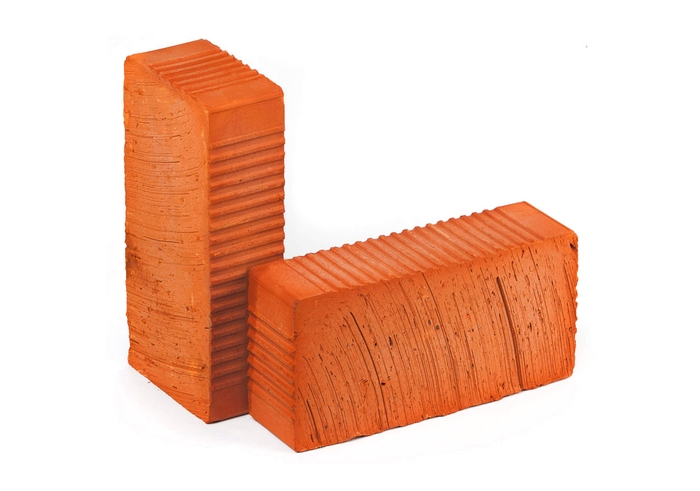 |
Subdivided into: solid, used for laying the walls of buildings, pillars, columns, masonry chimneys and ovens; hollow, which is used for the construction of partitions, filling frames, additional external walls; facing ("front", "facade"), which is used for facing buildings. |
 |
The speed of masonry is provided by protrusions on one side and rounded recesses and recesses on the back. It is used for the construction of partitions, load-bearing walls, cladding, laying decorative columns and supporting pillars. |
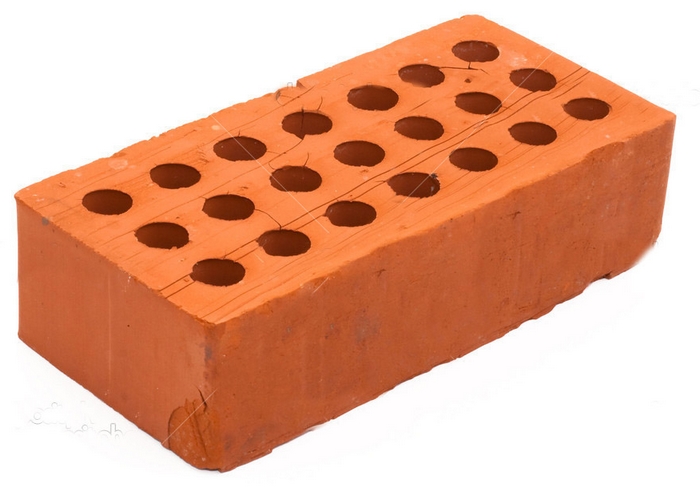 |
It is divided into varieties: porous, heat-efficient, cement-sand, ceramic, foam diatomaceous earth. Hollow is used for load-bearing walls and internal partitions. There are different block sizes. One-and-a-half slotted is suitable for main walls, single - for lightweight construction, double slotted - is indispensable for large-scale construction. |
 brick loaf brick loaf |
Produced by the brick factory in Makhachkala. Characteristics: red, double, full-bodied, filling, weight up to 7 kg. It is used in the construction of frames, load-bearing walls, supports, dimensions - 250x120x65 mm. |
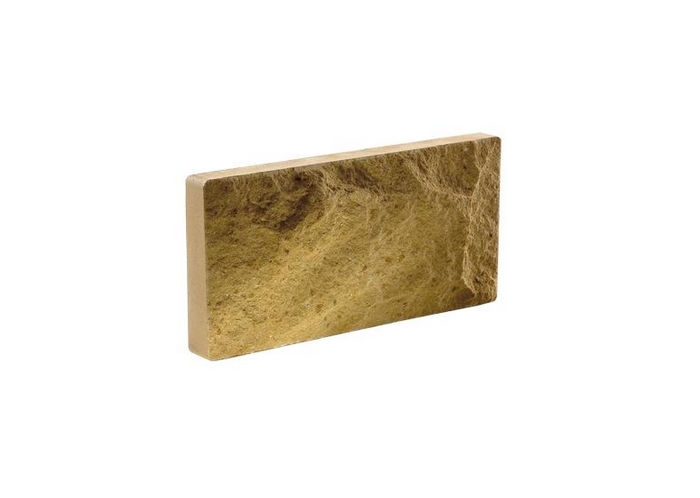 |
Attention is paid the following parameters: bricks must be of the same shape and size; the surface is smooth, without chips, cracks; rich, uniform color. Usually, a full-bodied red is used for the base, which can be burnt. Use: clinker, ceramic acid-resistant, clay red, silicate. |
 |
For exterior finish structures use facing narrow. The application is purely decorative. Often used for finishing a small object, for example, interior wall cladding and fireplaces. |
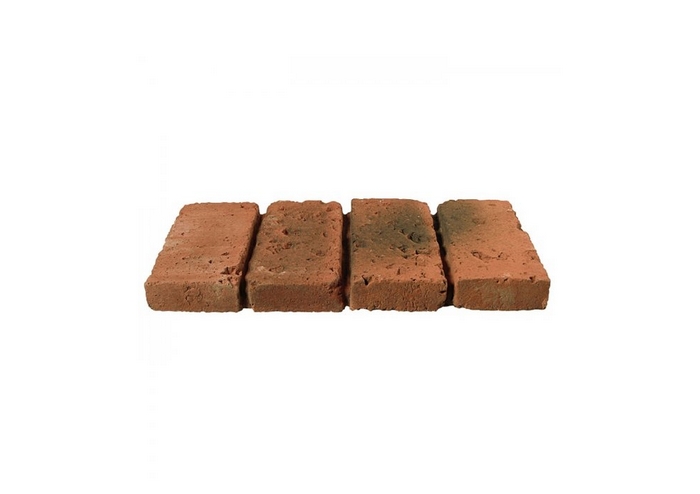 |
English is presented in yellow, red-brown, black-blue, can be variegated or uniform. The old method of handmade brick production (available at IBSTOCK factories) is based on driving a lump of clay directly into a wooden mold. It is usually used for finishing work. |
 |
Italian can be whole or half (there is also a cut). Stylish and refined in appearance, it allows you to perform masonry with elements shifted to different depths. |
 |
Draft (working, ordinary) is used for the construction of partitions and walls that require subsequent plastering, puttying, painting or cladding. Used for the construction of the basement and foundations. |
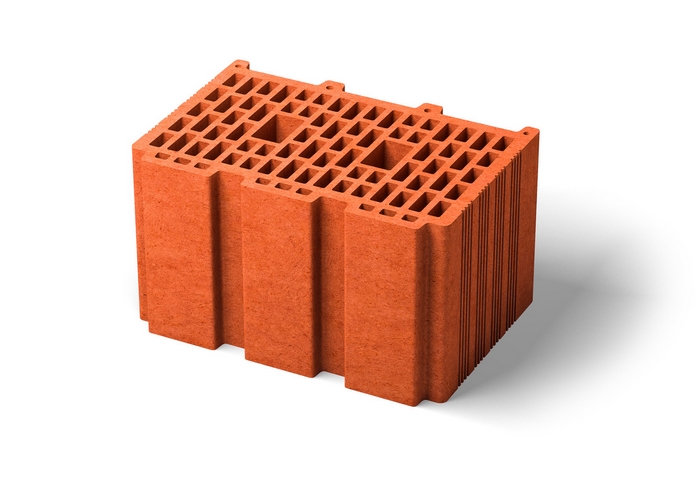 |
Used to build walls. |
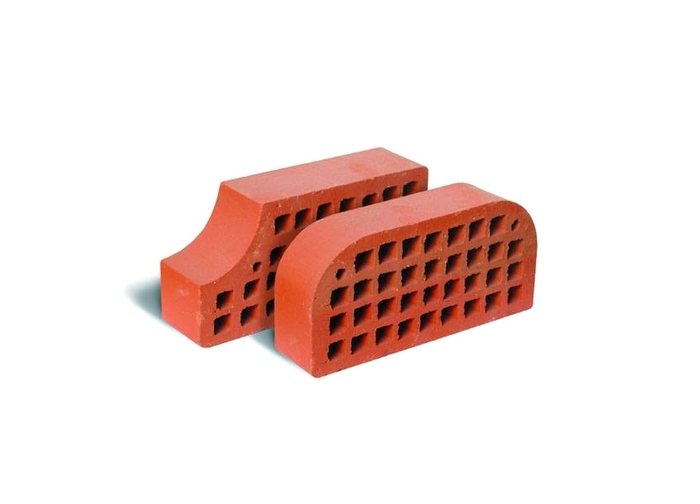 |
Used to create an original interior. Ideal for laying window and door openings, circulars and bay windows, for all structures with arched elements, including arches. |
 |
Clay, chopped straw, water and additives that regulate mechanical properties are used for production. Scope - southern regions with a hot and dry climate. Often used in countryside during the construction of outbuildings. |
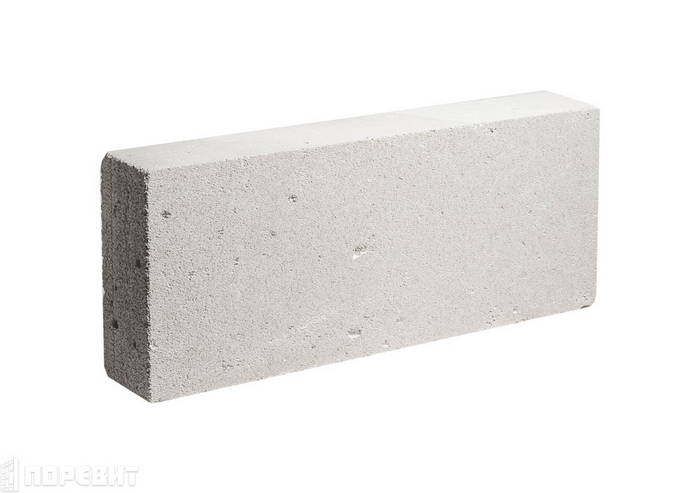 |
For the construction of partitions in buildings, hollow or porous is used. |
 |
Refers to a finishing building material, used for decorating architectural elements of building facades, interior cladding, street barriers. Features - the presence of a cut at one of the corners. |
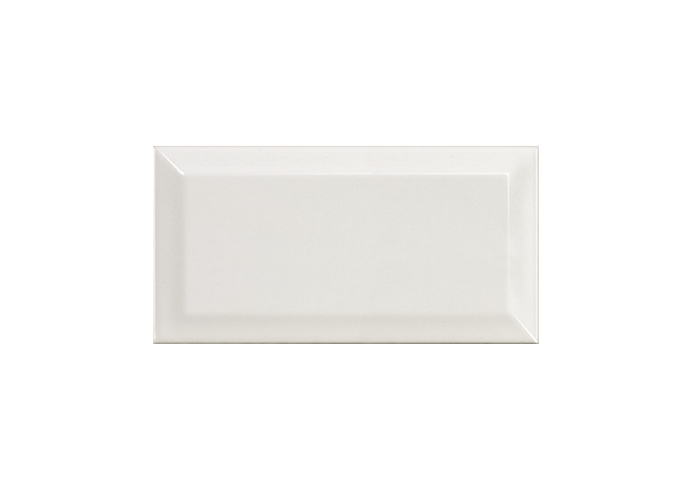 |
The tile is elongated, reminiscent of a brick, the chamfers (facets) are beveled, which gives a convex appearance. Used as finishing material loggias, bathrooms, public spaces - beauty salons, restaurants, cafes. |
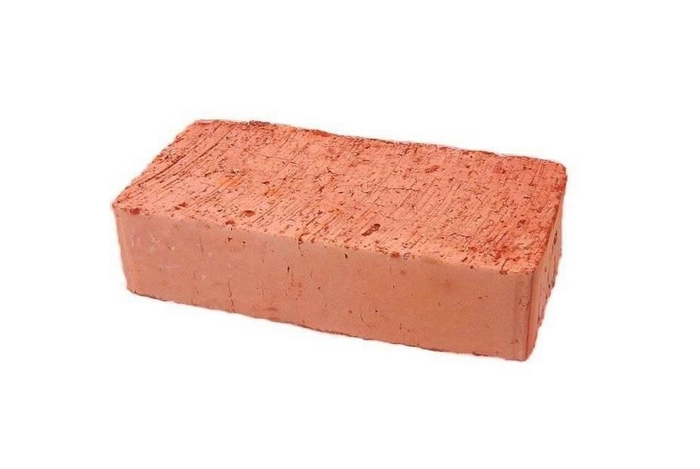 |
In the form of a backing (rubble) brick, a ceramic stone of red color acts, appearance which has disadvantages, namely: chips, roughness, oblique edges, heterogeneity of texture and color. It is used as a working simple material. |
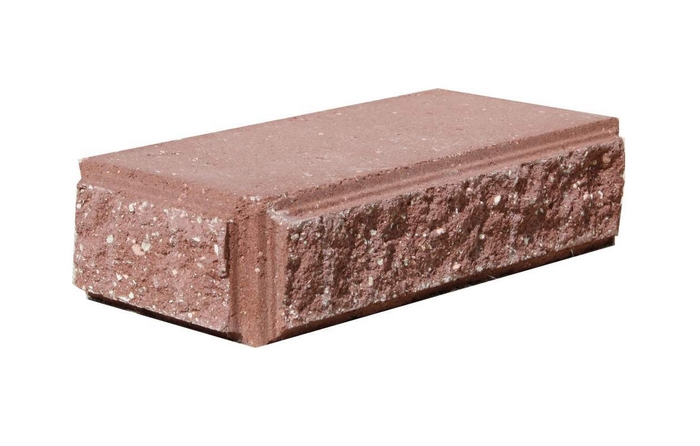 |
Scope of torn stone: lining of fireplaces, facades, plinth, pillars and other surfaces. It is made by decorative splitting (one of the sides), which acts as the front side and gives it a torn texture. |
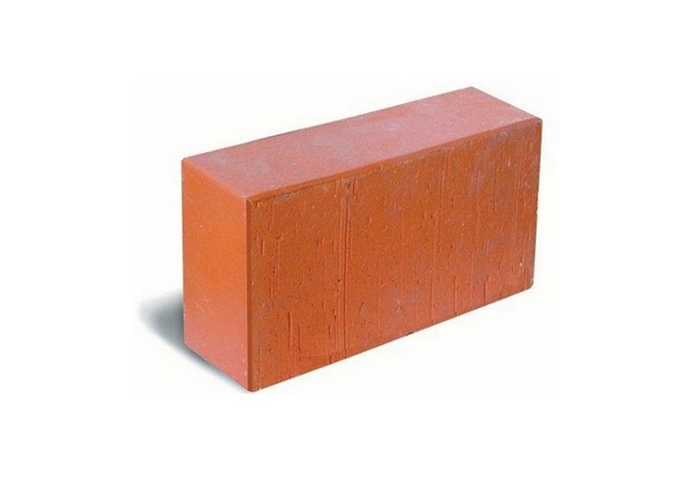 |
Method for the production of ceramic red bricks - clay firing at high temperatures with the addition of plasticizers and fixers of natural origin. This is the most environmentally friendly and warm material. Used in the construction of residential buildings. |
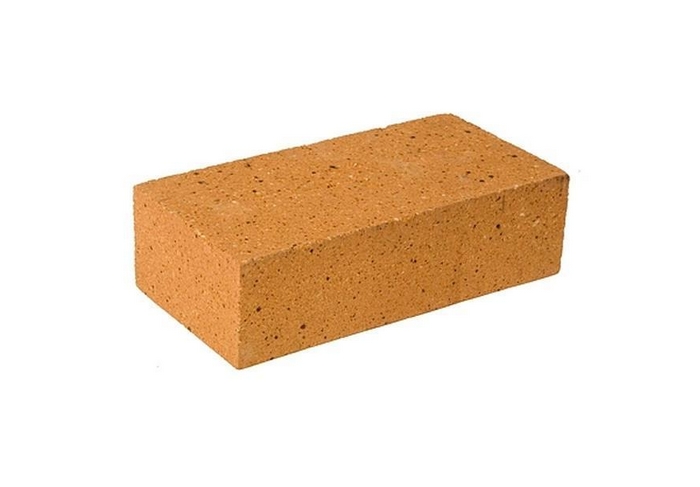 |
Capable of being attacked by acids. Used on industrial enterprises to protect equipment in contact with aggressive substances. They are used in the construction of gas ducts, chimney pipes, gutters, towers, tanks. |
 |
Used in the construction of cottage and multi-storey buildings, pavilions, arches, fences, for interior decoration, in the reconstruction of small architectural forms and buildings. There are 23 colors. |
 Refractory (heat resistant) Refractory (heat resistant) |
They are used for the construction of objects that are most exposed to elevated temperatures or open fire (fireplaces, chimneys). There is: fireclay, carbon, quartz, basic. The weight of fireclay is heavier than that of construction, with the same dimensions. The most famous manufacturer is Vitebsk. |
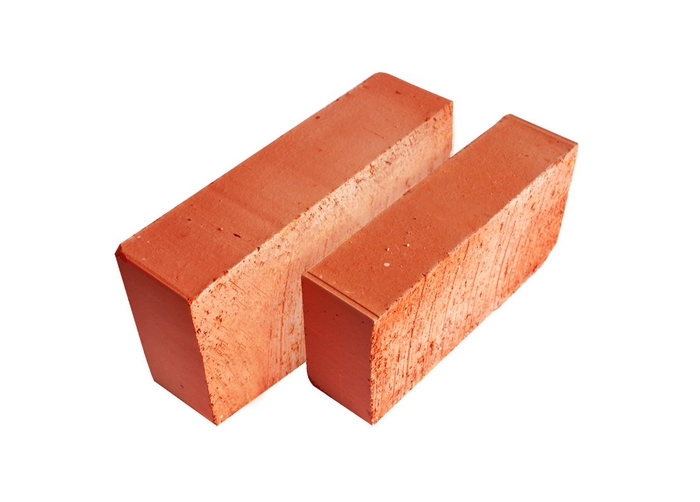 |
It is used for the construction of furnaces. Types: stove red and stove front. |
 |
Refers to fireproof. It is used in the construction of melting pots and furnaces in civil, residential and industrial construction. Withstands ultra-high temperatures over 1000°C. |
 |
Excellent facing decorative rock developed by vibrocompression technology. Presented in a wide range of colors. For its production, elite brands of cement, plasticizers, fine sifted sand are used. |
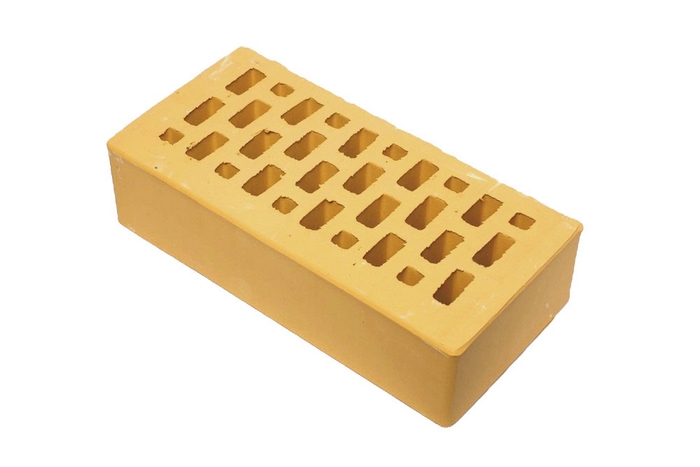 |
For facade cladding, front cladding is used, subdivided into: clinker, ceramic, silicate; hyperpressed (concrete). |
 |
Brick-ceramic building blocks. Suitable for different types laying walls in one row or more: main and non-main, external and internal, filling the space between walls, laying partitions. |
- Advantages of block bricks over conventional ones:
- ease of use due to the large dimensions of the blocks;
- strength;
- fire resistance;
- environmental friendliness;
- coefficient of thermal conductivity;
- malleability in decoration and decoration.
- Aerated concrete:
- durability;
- low coefficient of thermal conductivity;
- environmental friendliness;
- high fire resistance;
- economy.
- cinder block:
- inexpensive to purchase;
- masonry speed;
- strength.
- Foam concrete:
- profitability;
- comfort in the house;
- high heat and sound insulation properties.
- Gas silicate:
- construction is possible without further insulation;
- high environmental friendliness;
- strength;
- good sound insulation;
- low cost.
- Available in blocks:
- heat-insulating;
- heat-insulating and structural;
- structural.
- Brick is also offered:
- size 250x120x60 mm from soapstone;
- size 250x120x38 mm - construction slotted brick Kashira;
- 190x90x70 mm - decorative modular, gives the facade of the house a "techno-style".
IMPORTANT! Soapstone - rock formed from soft minerals. It is a polished stone that resembles marble.
Red (ceramic) brick size
Silicate brick size
Facing brick dimensions
| Dimensions | Type | View |
|---|---|---|
| 250x120x65 mm | Standard | Yellow |
| 250x120x60 mm | Single | Yellow |
| 250x120x103 mm | One and a half | Yellow |
| 250x120x65 mm | Single | White |
| 250x120x90 mm | One and a half | White |
| 250x120x65 mm | Single | for facade |
| 250x120x88 mm | One and a half | for facade |
| 250x120x138 mm | Double | for facade |
| 210x100x50 mm | Single | |
| 240x115x52 mm | Single | Custom size brick |
| 210x100x65 mm | Single | Custom size brick |
| 240x115x71 mm | One and a half, clinker | |
| 250x60x65 mm | american standard, ceramic | |
| 250x85x65 mm | Euro | |
| 250x88x85 mm | Euro |
Ceramic brick size
fireclay brick size
Solid brick size
Dimensions of hollow brick
| Dimensions | View | Manufacturers |
|---|---|---|
| 250x120x88 mm | One and a half | Brick factory "Votkinsky" |
| 250x120x140 mm | Double | |
| 250x85x65 mm | Euro | Brick factory "Votkinsky" |
| 288x138x65 mm | Modular Single | Brick factories - Stary Oskol, Khabarovsk |
| 250x200x70 mm | Ceramic | Brick factories - Stary Oskol, Khabarovsk |
| 250x120x88 mm | White silicate hollow | Brick factory "Votkinsky" |
| from 250x120x140 mm to 260x510x219 mm | Large large format ceramic blocks | Brick factories - Stary Oskol, Khabarovsk |
Modular brick size determines the size of stone structures and allows you to design brick buildings, taking into account these dimensions. This size takes into account the need for structural and architectural structures. Due to the unification of brick sizes, most of the junctions of stone structures are made standard and allow the use of ready-made solutions in various situations.
The size of the brick does not depend on the purpose
In order to ensure the binding brickwork, all bricks are made the same size, and facing brick and butovy. standard brick size 250x120x65 mm. Such a brick is also called single.
The size of a one-and-a-half brick is different in height 250x120x88 mm. Such a brick is less laborious, since to complete 1 cubic meter of masonry, 378 pieces must be laid out and not 512, as is the case with a single brick.
The size of brick structures
The size of stone structures is always a multiple of the brick width of 120 mm folded with the total width of the masonry joints between them. So the wall width can be 120mm, 250mm, 380mm, 510mm and so on. An exception is thin partitions made of a single solid ceramic brick laid on edge. The width of this design is 65 mm.
They also say that the width of the wall is half a brick, a brick, a brick and a half and so on. The brick in this interpretation is 250 mm, that is, the length of the brick is meant.
The dimensions of openings and short walls are designed in multiples brick size since the need to prepare halves or quarters in each row of masonry increases its complexity.
Brick weight
The weight of silicate or ceramic bricks is approximately 4 kg, but depending on the structure of the material and the type of brick, it may vary slightly. For example, a hollow brick has cavities, which reduces its volume and, accordingly, its weight. A brick can have a different number of voids of various shapes, so the weight of a brick is determined individually. However, for the design and construction of houses it is important to know specific gravity brickwork. This is the weight of 1 cubic meter. masonry, taking into account the weight of the solution.
The specific weight of the masonry depends mainly on the weight of the brick and varies from 600 kg/m3 to 1800 kg/m3. For brick buildings, this indicator has a strong influence on the weight of the entire building, which affects the design of the foundations.
The size of irregular bricks and stones of the correct form
In addition to ordinary and thickened (one and a half) bricks, factories produce ceramic and silicate stones 250x120x138 mm in size. The height of the stone corresponds to the height of two single bricks with mortar between them.
Also, as an alternative to brick, blocks of lightweight concrete with a size of 390x190x188 mm are widely used. Cellular concrete or concrete on expanded clay filler is used as the starting material.
Red brick is a building material that is excellent in its characteristics. It is characterized by properties such as strength and long service life. In the field of construction, it began to be used already 4000 years ago. In the course of the development of brick production, the appearance of the product, its shape, and dimensions will constantly change.
Thanks to this centuries of history today in the construction market, red brick is presented in a wide range, which includes about 15,000 types. Each of them differs in its textures and colors. All varieties of red brick are classified into certain conditional categories, which determine the composition, structure, color and purpose.
For the manufacture of the presented product, clay mixed with water is used, which is then fired. As a result, the sample is exposed to high temperatures, which contribute to the formation of irreversible chemical processes.
 In the photo - the dimensions of the red brick
In the photo - the dimensions of the red brick During the acquisition of this product, it is necessary to pay attention not only to the quality characteristics, but also to the type and dimensions of the red brick. Thanks to all these indicators, the product acquires various properties which have an impact on performance.
You can find out how much a brick for a basement costs from this
In addition to its attractiveness, the presented product has a long service life and durability. As a result, it is possible to achieve the safety of erected buildings. In addition, the repair of facades, during the construction of which red brick was used, is very rare.
Which brick is best suited for the oven can be found in this
On the video - the size of a standard red brick:
You can find out the properties of ceramic bricks from this
Dimensions
Since red brick has a different classification, each type has its own dimensions. For an ordinary standard red brick, the length remains unchanged - 250 mm, width - 120 mm, but as for the thickness, it depends on the type of product: single - 65 mm, double - 130 mm and modular - 88 mm. For one and a half red bricks, the following dimensions are characteristic: 250 * 120 * 88.
About what sizes of white silicate brick can be found here from this
full bodied
The classic dimensions of this product are actively used in the construction of load-bearing and reinforced buildings, the construction of foundations, stoves and fireplaces. Such a marking is typical for such a product: M-075, M-100, M-125, M-150, M-175. The level of frost resistance can reach F50. What size? The dimensions of a single red block will be 250x120x65 mm. The cost of these products will be 9.4-16 rubles apiece.
The red brick is unique material actively implemented in various construction industries. Depending on a particular type, each material is used for specific purposes. In addition, each type of red brick has its own dimensions, which is also very important when buying this product.
During the construction of absolutely any building (with the exception of a panel building), brick is used as the main material. Such walls, unlike panel ones, are stronger and more durable. However, installation and take much more time than the installation of panel plates. But be that as it may, this material is used in the construction of most modern buildings, which means it is more practical and reliable. In today's article, we will find out the size of a standard brick and talk about its varieties.
Varieties
As you know, building bricks vary in size, characteristics and purpose. In this case, this material can be divided into 3 categories:
- One and a half.
- Single.
- Double.
The size of a standard brick for each of these types is different. It is determined by three parameters: length, width and height.
The brick size (standard single type), which is used in the construction of most modern buildings and institutions, is as follows: 250x125x65 millimeters. At the same time, the silicate (double) material has dimensions of 250x120x188 millimeters.
In construction, the size of a standard brick is 250x125x65 millimeters. That is, the most used type of brick is single. In addition, in the field of construction, its thickened appearance is often used with a length of 250 mm, a width of 120 and a height of 80 millimeters. It is also worth noting the modular varieties. The dimensions of a single brick of a modular type are 138x13x288 millimeters. 
It is worth noting that the so-called ceramic stones can also be used in the construction of walls. They have nothing to do with stones, and therefore they are marked in production as ceramic blocks. Many sellers also refer to them as "double brick", so when buying, do not think that this is a different type of material. Ceramic stone, block and double brick are the same product. And its dimensions are as follows: 250x125x138 millimeters (length * width * height, respectively).
Compliance with GOST
GOSTs (State Standards) do not apply to products of this type in Russia, especially for new technical products that appeared on the market several years ago. Of course, the use of ceramic bricks in the construction of a residential building or other buildings is a very profitable business, since, due to its large size, the cost of laying it is minimal. Accordingly, the speed of work is several times greater than the time of laying a single material. In addition, the savings apply to which you need to prepare for laying a row of bricks. 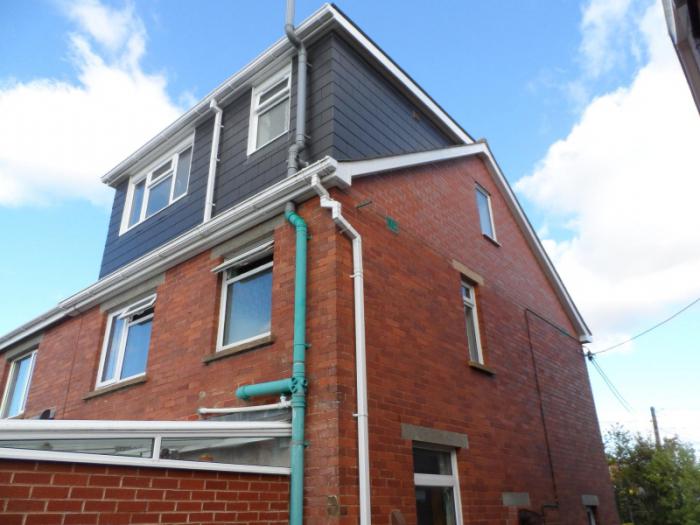
Ceramic stone is mainly used in the construction of multi-storey buildings, whether it is a residential building or a garage. Statistics show that the number one-story houses, in which this type of material is used in construction, is units. Although even if we compare the total number of multi-storey institutions with ceramic stone walls and the same buildings with classic single brick, the difference will be several dozen times.
Why is such material not in great demand in Russia?
The fact is that many customers simply do not know how this stone will behave 10-20 years after laying, and whether the wall will last until that time. From here it turns out that with a constant temperature difference of 60 degrees Celsius or more (the difference between the air temperature in winter and summer), such a brick can simply crumble in one cycle of operation. Although there are no objective reasons to call this stone the most unreliable, since not a single scientific study has been carried out on this subject. So it turns out that the laying of ceramic stone is like playing roulette: you never know when the building will collapse, and whether it will be soon. 
A few words about the differences
But back to size. At the beginning of the article, we indicated the exact size of a standard brick. Depending on the type, its length can be 65 - 138 millimeters. At the same time, these values \u200b\u200bmay depend on the place of application of one or another type of material (for example, dimensions can vary from 65 to 500 millimeters in height). We also note that the difference in the dimensions of a single brick and a one and a half brick is not at all 1.5 times, as it seems to us outwardly. If you look more closely and compare the height of the first (65 millimeters) and the second (88 millimeters), we can say that it is exactly 1.35 times higher. But for ease of perception, such materials are referred to as "one and a half".
Why exactly 250x120 millimeters?
Most modern types of bricks are 250 mm long and 120 mm wide. The difference lies only in the height of the material (for example, the size of a white brick is 250x120x88 millimeters). What is it for? And this is necessary so that when laying this brick it is convenient to use. In terms of its size, such material fits perfectly in the hand, and since it is used for the most part during the construction and erection of the wall physical strength the builders themselves, then these dimensions are the most convenient when laying rows (not with a tower crane to lay them). 
Few people know, but uniform brick standards in Russia were introduced only a few years ago - in 2008. And despite the fact that for the first time it began to be used in 1927. To the surprise of everyone, in Soviet times, almost all buildings were created using bricks that did not meet any standards and requirements. However, these buildings this moment are the strongest and most durable.
You are on the official website of the "Complex-S" company. Our company, founded in 2001 in Yekaterinburg, is a supplier of reinforced concrete products in the building and wall materials market.
On an ongoing basis, we work with more than 1000 manufacturing plants. The network of branches allows us to carry out bricks to any point of the country from St. Petersburg to Nakhodka. Thus, from our building materials residential, industrial and road facilities are being built throughout the country.
brick size
Until 1927, building bricks, known to our distant ancestors, were made without a single dimensional norm. Until this year, each brick factory produced bricks of its own dimensions, which greatly complicated the process of calculation and construction and made it problematic to use standard solutions.
Brick Size Evolution
During its long historical journey, ceramic bricks went through many size modifications before they acquired their current appearance, perhaps not yet final. The famous innovator Peter I, inspired by the European example, decided at the beginning of the 18th century that a standard brick Russian Empire should be 11 inches (28 cm) long, 5.5 inches (14 cm) wide and 2.75 inches (7 cm) high.
"Yes, there were people in our time..." - imagine this brick and compare with a modern model.
IN mid-nineteenth century, a second milestone occurred in the history of changing the size of a brick - now it began to be measured already in inches and was 6 inches in length (26.5 cm), 3 inches in width (13.3 cm) and 1.5 inches in thickness (6.7 cm). From that moment on, there was a tendency to reduce the size of the brick, which, developing in further jerks, flowed into the sizes familiar to us today, fixed in 1927. Since then, the standard brick has been referred to as "".
Standard brick sizes
To unify the construction and production of large volumes of bricks, the first GOST was compiled. Through improvement, the ideal brick size was developed, which many already know by heart. The dimensions of a standard brick are 250x120x65 mm. This is the optimal length, width and height of the brick - such a brick fits well in the builder's hand. The modular brick size determines the parameters of future stone structures and makes it easy to design brick buildings taking into account these dimensions.
Due to the unification of brick sizes, most of the junctions of stone structures are made standard, which allows the use of a maximum of ready-made solutions in various situations.
Variety of brick sizes
Traditionally, standards distinguish between ceramic and silicate bricks. The materials of these products are strikingly different - they are molded from clay (mainly with various functional additives) and fired at high or very high () temperatures. And the basis for the production of silicate brick is a mixture of quartz sand, lime and water. regulates, and ceramic brick is determined . The characteristics of these two types are regulated by different GOSTs, but the dimensions of these products are identical:
Single
Dimensions of a single brick in In the course of the development of the brick business in Russia, the classic long-familiar 25 centimeters long, 12 wide and 6.5 centimeters long familiar to us have gradually turned into optimal for alternating transverse and longitudinal placement of bricks relative to the masonry axis. Such a brick is called single.
One and a half
In the course of the development of construction, other sizes of bricks appeared to speed up the process. So, the idea was born to produce a one-and-a-half brick. Its dimensions: length - 250, width - 120, height - 88 mm. Such a brick size saves masonry time, since 378 pieces need to be laid out to make 1 m3 of one-and-a-half bricks, and 512 pieces will be required to compare ordinary ceramic bricks. To perform masonry light in weight, a rich nomenclature was developed not only in size, but also in execution - hollow, perforated and porous bricks were added to ordinary, full-bodied bricks.
Double
Double brick - a product of the further development of masonry work, is two ordinary bricks in height plus a layer of mortar. Practically not found full-bodied, it is perforated and used in lightweight masonry. The dimensions of such a brick: length - 250, width - 120, and height 103 mm.
Other sizes
In addition, there are two more standard brick sizes that are used somewhat less frequently than the main ones listed, but are gaining popularity - “euro” brick 250x85x65 mm and modular single brick 288x138x65 mm.
Bricks are also produced in large sizes (usually porous or hollow), however, the process of firing them can take a longer time and there is a risk of insufficient “baking” of the product.
As a rule, the dimensions of the shaped and, which can be rounded, beveled, combined, do not match the standard ones. Often only the length of such products is a multiple of the standard, for the convenience of calculating the structure.
Dimensions , as a rule, correspond to the standard sizes of bricks. Therefore, even a brick with a glazed surface, which gives facades and other architectural forms an expressive look, has the same dimensions as an ordinary solid brick. Separately, only textured bricks can be distinguished, which, due to technological processing, have various kinds of relief or imitation of natural stone.
As for specialized bricks, it is worth noting that the size of refractory bricks can be either 230 × 113 × 65 mm or 230 × 123 × 65 mm.
Variations in brick sizes
The standard allows fairly large deviations in the size and shape of both silicate and, which are explained by large and uneven shrinkage during the production of bricks. It is permissible if the deviations in size and shape of the brick do not exceed:
- length ± 4 mm, width ± 3 mm, thickness ± 2-3 mm;
- non-straightness of edges and ribs, not more than: on the bed - 3mm, on the spoon 4mm;
- through cracks on bonder and spoon faces - no more than one in length along the bed 30 mm.
Brick production
The manufacturer lays down the dimensions of the brick at the stage of its release. The molding of ceramic bricks depends on the equipment used and the production capacity, since there is no universal technology here. There are four main ways:
- by molding on crackers;
- on a vertical pug mill;
- machine on a belt press;
- manual pouring.
It is from the molding process that the correctness of the shape and size of ceramic bricks directly depends. Ceramic brick, the dimensions of which at the stage of blanking have larger parameters than the standard 250x120x65 mm, because during firing the material shrinks and the blank “dries out” by about 8%.
The correct finished ceramic or silicate brick should be a neat parallelepiped with no dents, curvature of the edges or chips at the corners, because any defect in the brick will necessarily affect the subsequent laying.
The rapid growth of construction has proven that three sizes of bricks are not enough, because, for example, it is problematic to use a single brick when creating interfloor floors, right and window openings, as well as when combining it with other building materials (for example, cement-sand blocks). For this reason, to simplify the process, manufacturers began to look for new solutions and can no longer produce only one type of material, as the market dictates its own terms.
Today, the manufacturer is trying to be as flexible as possible in relation to the produced sizes and varieties of ceramic and silicate bricks. In constant development they are assisted by designers, whose hectic activity dictates more and more daring decisions, which are then applied by architects in exclusive and standard projects. Many new items have already been standardized and therefore a much expanded classification has been adopted in GOST and its annexes, which includes 46 varieties of bricks and stones, of which various kinds there were 29 bricks, and the remaining 17 were stones. However, despite the constantly updated bricks and stones, the most popular is still a single brick.
